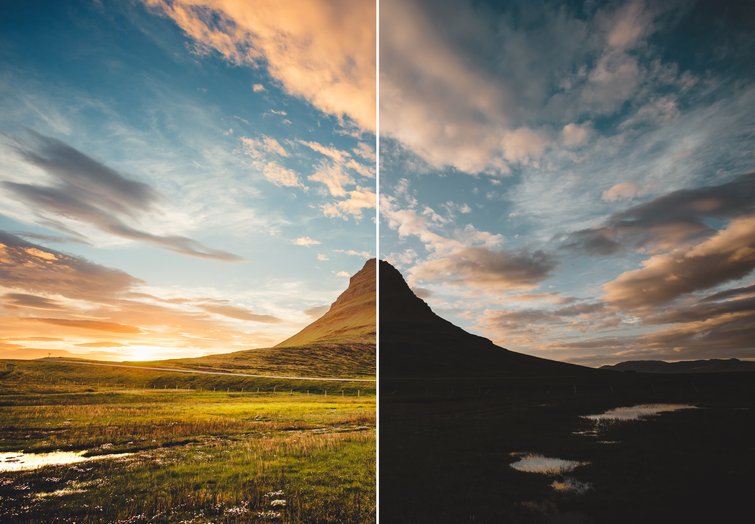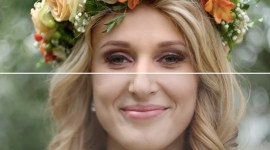
How to Create Continuity When Using Stock Footage
Creating continuity is a vital aspect of video production. Here are three ways to ensure continuity holds up when using stock.
While editing a music video a few years ago, I was faced with a dilemma. I’d been given footage that was to be cut together and combined into one scene. But, because the footage had been shot over two days, there were stark, obvious differences between how some of the shots looked.
On one of the days, the weather was overcast. This produced some lovely, shadow-free images. However, the sun had been shining on the other day, so there were harsh shadows present on the faces in the video.
It was unfortunate, but it couldn’t be helped; due to time restrictions, the team had no choice but to shoot in these contrasting lighting conditions. And despite my best editing efforts, I was unable to create a strong sense of continuity. The illusion of it all being one scene was shattered.
Creating a Sense of Continuity

It’s important to create a sense of continuity from one scene to the next. Image via Creative Travel Projects.
Creating continuity is a vital aspect of video production. A lot of productions will have a script supervisor whose job it is to help maintain continuity across a shoot. They keep track of numerous details using photos and vast amounts of paperwork, taking note of the many factors in the scene, as well as keeping detailed records of camera positioning, lighting setups, and other technical details. If this is done successfully, shots that have been filmed months apart can sit next to each other in one scene without the viewer noticing.
However, because of the complex nature of production, continuity errors still pop up more often than you’d think. It can be anything, really, and it’s usually something insignificant — the length of a cigar of the level of a drink. But, occasionally, they’re more noticeable — like a change in the main character’s appearance.
There are so many factors that come together to create a production, which is why it’s so easy for continuity errors to occur. Productions are rarely shot in the order in which the final piece is cut together. They’re also usually chaotic because of the amount of moving parts involved. Tight budgets or restricted schedules may mean that things need to move faster than is ideal. As a result, these small errors can occur.
Continuity on smaller, unscripted productions, however, can be much simpler. It’s more about providing a sense of cohesiveness within a piece, connecting each shot to the next, and preventing anything that might pull your audience out of the moment.
Incorporating Stock Footage, Images, and Music
Due to the travel, safety, and budget concerns created by the COVID-19 pandemic, more video professionals than ever before are leaning on stock footage to flesh out their projects.
It’s challenging to produce a sense of consistency when using stock, as the footage is often shot on different cameras using different picture profiles in different lighting conditions. Obviously, you can’t control these elements, so you must innovate in order to help your footage flow.
It’s definitely worth the effort to really search for stock that meshes with your existing footage, even if it requires some perseverance. Try your best to match things like lighting, the time of day, weather conditions — if you can get close, you can make it work.
Build Continuity with Stock Footage
I downloaded the following clips using the Shutterstock extension for FCPX, which made the process of working with stock footage quick and painless. Once it’s downloaded and installed, simply open FCPX and a new icon will have appeared, as shown below.
When you click on the icon, a window will appear that will allow you to browse the Shutterstock library and download your selected shots straight into your FCPX Library.
All you have to do is click the download icon, and the previews of those clips will automatically be added in to the event of your choice.
You can also license the clips through the extension, which allows you to add in the high resolution versions of the footage while staying within one interface. Working this way has seriously improved the efficiency of my workflow. (FYI, Shutterstock has a few more plugins and extensions, including one for Premiere Pro.)
Now, let’s look at three ideas I’ve come up with that help me build continuity when using stock clips.
First, here’s the video we’ll be fixing. It’s got some original footage, some stock footage, and some pretty obvious continuity errors.
Idea 1: Letterbox
The key with these ideas is to create an element of the video that each shot has in common in order to make the cuts between shots far less noticeable. If you apply a letterbox to the whole video, it gives it an end-to-end sense of identity, rather than appearing as several disjointed shots. It’s a stylistic choice, but if it fits with your video, it could be helpful.
Idea 2: Color Grade
Differences in brightness, contrast, and saturation between images can be problematic when using stock footage. Sometimes, there are particular casts on certain shots which can make them stand out from those on either side of them.
You can try to minimize these differences in appearance during the color grading stage of the edit. You can also give them a stylized grade for a greater sense of connection. Occasionally, though, even after your best efforts, they still look disconnected.
One way to neutralize these differences is using a black-and-white look on all the clips, which is what I’ve done in the video below. Now, all the shots have the grade and the letterbox in common.
Idea 3: Sound Effects
Using a sound effect that runs under all the clips can create a sense of consistency. I used a general ambient outdoor sound effect in this video, reflecting the hustle and bustle present in these clips. It definitely helps one clip flow well onto the next.
No that you’re a stock footage pro, here are a few other tips, tricks, techniques, and hacks you can use to evolve as a video editor:
- Beware the Pitfalls of Video Editing with Temp Music
- How to Create Custom Lower Thirds in Final Cut Pro X
- How to Be a Video Editor that Directors Want to Work With
- What Is RAM, How Much Do You Need, and Which One Should You Buy
Cover image via Samot.








